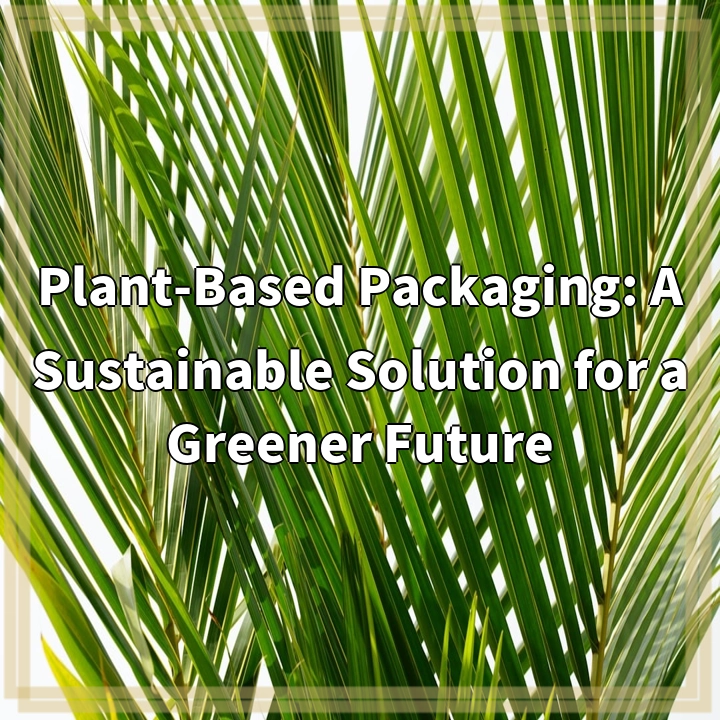
What it is:
Plant-based packaging refers to packaging materials made from renewable, natural sources such as corn, sugarcane, and other plant-derived materials. Unlike traditional plastic packaging, which is derived from fossil fuels, plant-based packaging offers a more sustainable alternative that can help reduce the carbon footprint associated with packaging waste. This type of packaging can take various forms, including biodegradable films, compostable containers, and paper products made from sustainably sourced fibers.
The Benefits of Plant-Based Packaging
One of the primary advantages of plant-based packaging is its potential to be biodegradable or compostable, breaking down naturally and returning to the earth without leaving harmful residues. This contrasts sharply with conventional plastics, which can take hundreds of years to decompose, leading to environmental pollution and harm to wildlife.
Real-World Problems
1. Material Sourcing and Competition with Food Production
Despite its benefits, plant-based packaging faces significant challenges, particularly concerning the sourcing of raw materials. The production of plant-based materials often competes with food crops, potentially driving up food prices and impacting food security. As demand for bio-based materials grows, it is crucial to ensure that agricultural practices prioritize both sustainability and food production needs.
2. Industrial Composting Requirements
Many plant-based packaging products are designed to be compostable, but they often require specific industrial composting facilities to break down effectively. The lack of infrastructure for industrial composting in many regions limits the accessibility and practicality of plant-based packaging solutions. Without proper facilities, these materials may end up in landfills, where they do not decompose as intended.
3. Variety of Standards and Regulations
Another issue is the inconsistency in standards and certifications for plant-based packaging. The market is filled with products claiming to be “biodegradable” or “compostable,” but without uniform regulations, consumers may struggle to make informed choices. Misleading marketing can undermine trust in plant-based solutions and hinder their adoption.
4. Performance and Consumer Acceptance
Plant-based packaging materials must also meet performance standards comparable to traditional packaging. Issues such as durability, moisture resistance, and shelf life can affect their viability for various applications. Additionally, consumers may be hesitant to shift their purchasing habits if they perceive plant-based packaging as less effective or more expensive than conventional options.
5. Environmental Trade-offs
While plant-based packaging presents a more sustainable alternative to petroleum-based plastics, it is not devoid of environmental trade-offs. The cultivation of raw materials can require significant water and land resources, and if not managed sustainably, can lead to deforestation and biodiversity loss. It is essential for manufacturers to consider the entire lifecycle of packaging materials to truly gauge their environmental impact.

Solutions to Challenges Facing Plant-Based Packaging
1. Sustainable Material Sourcing
To address the issue of competition with food production, developing sustainable sourcing practices is crucial. This involves using non-food crops, such as agricultural waste or byproducts, to create plant-based materials. Promoting crop diversity can also help mitigate the impact on food supplies while ensuring a steady flow of raw materials for packaging.
2. Expanding Composting Infrastructure
Investing in infrastructure to support industrial composting facilities can enhance the effectiveness of plant-based packaging. Governments and private organizations can work together to establish more composting centers and educate consumers about where to properly dispose of these materials. Additionally, advocating for local composting programs can help communities manage organic waste more effectively.
3. Establishing Standardization and Certification
Creating a unified set of standards and certifications for plant-based packaging is critical for building consumer trust. Industry stakeholders, including manufacturers and environmental organizations, should collaborate to develop transparent guidelines that clearly define what constitutes compostable and biodegradable materials. This would enable consumers to make informed choices about the products they purchase.
4. Enhancing Performance and Cost-Effectiveness
Research and innovation are essential to improving the performance of plant-based packaging solutions. Developing advanced materials that provide comparable strength, durability, and moisture resistance to traditional packaging can facilitate wider adoption. Moreover, economies of scale in production can help lower costs and make plant-based options more competitive in the market.
5. Lifecycle Assessment and Environmental Considerations
Conducting comprehensive lifecycle assessments of plant-based packaging materials can help manufacturers and consumers understand their environmental impacts fully. This includes evaluating resource use, emissions, and end-of-life outcomes. Striving for holistic sustainability in the design and production of plant-based packaging will ensure that it serves as a genuinely eco-friendly alternative to conventional options.















